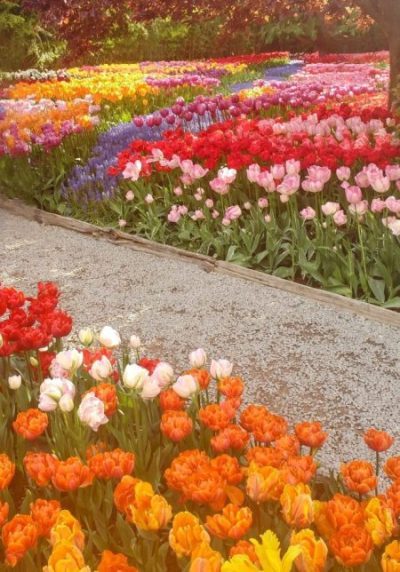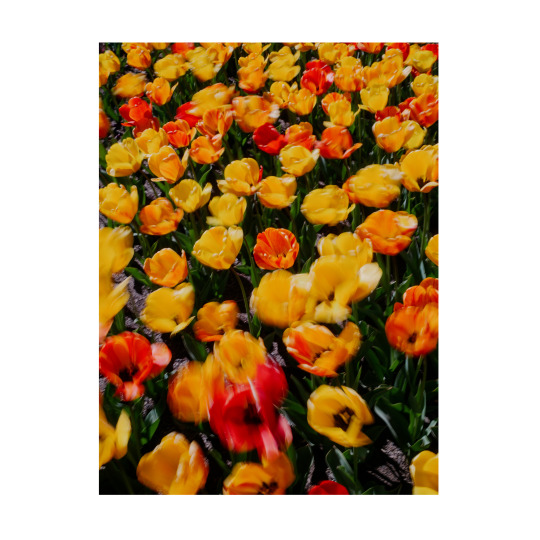#skagit valley tulips
Explore tagged Tumblr posts
Text






4 notes
·
View notes
Text

Rainbow over Skagit Valley Tulip Field in Mount Vernon, Washington
32 notes
·
View notes
Text




Skagit Valley Tulip.
Photo credit: Pam Headridge
#art #art history #artwork #culture #history
#ART#Skagit Valley Tulip#TULIP#roses#landscape#VALLEY#US#photographer#photography#rafah#united nations#ryan guzman#taylor swift#eurovision#anti zionisim#CNN#news#breaking news#us news source#NPR#Eurovision 2024#BoycottPureGym#investigation#FridayFeeling#prince harry#Invictus Games
3 notes
·
View notes
Text
Tulips in Skagit Valley, WA
Spring is a beautiful time of year, and there’s no better way to celebrate the season than by taking a trip to see the colorful tulip fields in Skagit Valley, Washington. Skagit Valley is located just north of Seattle and is home to the largest tulip fields in the United States, making it a popular destination for travelers from all over the world. Getting to Skagit Valley from Seattle is easy,…

View On WordPress
#farm#flower farm#flowers#nature photography#Pacific Northwest#photography#pnw#road trip#Seattle#skagit valley#spring#spring flowers#tour#travel#tulip festival#tulips#Washington
4 notes
·
View notes
Text
Skagit Valley Tulip Festival, Mount Vernon, WA 98273

This was my first visit to Mount Vernon and it was during April, aka Tulip Festival time. The festival is basically four tulip farms that are open to the public and various tulip events during the month of April. The main attraction are the tulip farms though. There are four of them: RoozenGaarde, Tulip Town, Tulip Valley Farms, and Garden Rosalyn. RoozenGaarde is the largest by far. All four require tickets. You can save a few dollars by buying your tickets online, in advance. I drove by Garden Rosalyn and hardly anyone was there. It looked very small.
This year, RoozenGaarde was $15 on a weekday. The ticket did not ask me to specify a date or time. The other gardens were also $15 each. Some have night viewing. You could make a day or weekend out of it if you’re really into tulips. I think it’s a bit expensive especially if you want to visit multiple farms. There should be a pass with a discount for those who want to see more than one tulip farm.
When you enter Mount Vernon, you’ll see “Tulip Route” signs for people who want to take a scenic drive past the tulip and daffodil fields. Skagit Valley produces more tulip and daffodil bulbs than any other county in the US. And the Skagit Valley Tulip Festival is the largest tulip festival in the country by acreage of tulips, number of farms, and days of blooms.
Timing is important as most blossoms only last about two weeks. There’s a bloom map that the SVTF provides online to help with planning. The area also has breweries, wineries, farms, nurseries, etc.
Mount Vernon is about 60 miles north of Seattle. Expect some traffic. It took me about 90 minutes to get up there and over 2 hours to get back.
People recommend going early on a weekday to avoid the crowds.
4 out of 5 stars
By Lolia S.
0 notes
Text

1 note
·
View note
Photo

Foggy Tulip Field, Skagit Valley, Washington
1 note
·
View note
Text




🌹Skagit Valley, Washington — Tulip Festival 2019
41 notes
·
View notes
Text

Skagit Valley Tulip Fields
47 notes
·
View notes
Text
Flower Power Friday
Thanks for tagging me @jamilas-pen! I'm taking us back in time to March of this year, when I visited the flower farms in Skagit Valley, WA. Years ago I went there when the tulips were in bloom. This time I went earlier to see the daffodil fields. We start in the ornamental gardens, with the hyacinths. Then we catch a glimpse of the fields, and finally we're right at the edge of a field of daffodils



I love how cheerful they are, and I wanted to share that with everyone.
If anyone else has flowers they want to share, please do!
10 notes
·
View notes
Text


Skagit Valley Tulips, Washington, 2003.
#landscape#agriculture#flowers#tulips#skagit county#washington state#2003#photographers on tumblr#pnw#pacific northwest
46 notes
·
View notes
Text

Skagit Valley Tulips, Washington, 2004.
#landscape#mountains#agriculture#flowers#tulips#skagit county#washington state#2004#photographers on tumblr#pnw#pacific northwest
25 notes
·
View notes
Text
Blossoming Beauties: Exploring Tulip Farms Around the World

Tulips, with their vibrant colors and delicate petals, have enchanted gardeners and admirers for centuries. Beyond their aesthetic appeal, tulips also hold economic significance as they are cultivated for various purposes, including ornamental gardening and floral arrangements. While tulips can be grown in many regions around the world, certain areas stand out as prime locations for tulip farming due to favorable weather and climate conditions.
Where Tulip Farming Flourishes
The Netherlands reigns supreme in tulip production, earning its reputation as the epicenter of the global tulip industry. Dutch tulip farms, with their meticulously arranged rows of colorful blooms, attract tourists and florists alike. The regions of North Holland, South Holland, and Flevoland boast extensive tulip fields, contributing significantly to the country's economy through tulip bulb exports and tourism revenue.
Beyond the Netherlands, other countries such as Turkey, the United States (particularly Washington state), and Japan also cultivate tulips on a significant scale. These regions share common factors that support successful tulip farming.

Climate and Weather Factors
Tulips thrive in temperate climates characterized by distinct seasons, although they can adapt to various conditions with proper care. Here are some key climate and weather factors that influence tulip farming:
Temperature: Tulips require a period of winter chilling to stimulate growth and flowering. This period, known as vernalization, typically lasts for 12 to 16 weeks at temperatures between 35°F to 45°F (1.7°C to 7.2°C). Mild winters with adequate chilling hours promote robust tulip growth without exposing bulbs to harsh freezing temperatures that could cause damage.
Rainfall and Irrigation: Adequate moisture is essential for tulip cultivation, especially during the growing season. However, excessive rainfall or waterlogging can lead to bulb rot and other fungal diseases. Well-drained soil and controlled irrigation systems help maintain optimal soil moisture levels, preventing water-related issues.
Sunlight: Tulips require full sun or partial shade to thrive. In regions with long daylight hours and abundant sunshine, tulip flowers develop vibrant colors and sturdy stems. Adequate sunlight exposure also ensures proper photosynthesis, which contributes to bulb development and overall plant health.
Soil Quality: Tulips prefer well-drained, sandy loam soils with good fertility and pH levels between 6.0 and 7.0. Soil that retains too much water can cause bulbs to rot, while overly acidic or alkaline soils may affect nutrient uptake and plant growth. Farmers often amend soils with organic matter and minerals to improve texture and fertility.
Why Tulips Thrive in Certain Regions
The Netherlands' success in tulip farming can be attributed to its ideal combination of climate, soil conditions, and centuries of horticultural expertise. The country's maritime climate, influenced by the North Sea, provides mild winters, cool springs, and moderate summer temperatures—perfect for tulip cultivation. Additionally, the fertile soils of the Dutch polders, reclaimed from the sea, offer optimal conditions for bulb production.

In regions like Turkey and the United States, similar climatic factors contribute to successful tulip farming. Turkey benefits from its diverse geography, with regions like Istanbul and Cappadocia offering suitable climates for tulip cultivation. In the United States, Washington state's cool, temperate climate and well-drained soils support a thriving tulip industry, particularly in the Skagit Valley.
Conclusion
Tulip farming represents a harmonious interplay between nature's elements and human cultivation practices. While tulips can adapt to various climates and soils, certain regions offer ideal conditions for maximizing yield and quality. Whether in the colorful fields of the Netherlands or the scenic landscapes of Washington state, tulip farms continue to captivate enthusiasts worldwide, reminding us of nature's beauty and resilience.
2 notes
·
View notes
Text

Tulips, Skagit Valley, Washington, April 2024.
5 notes
·
View notes
Text






2023 tulip festival - roozengaarde, skagit valley
#i did it! good lord it was a nightmare of a roadtrip#my bladder was so inflamed lmao but was very proud#now i have something for my own tag#all the daffodils for louis#pnw#tulips#daffodils#washington#photography#mine
15 notes
·
View notes
Text
Roozengaarde, 15867 Beaver Marsh Rd, Mount Vernon, WA 98273

Roozengaarde is by far the largest of the four tulip farms that are part of the Skagit Valley Tulip Festival. The farm has over 50 acres of tulips, replanted by hand every year. You can see acres of tulips and daffodils on the farm, in fields and also arranged in show gardens.
In addition to the fields and display gardens, there was a gift shop (it was okay – the Roozengaarde apparel is not attractive, fake tulips, real tulips, gardening tools, kitchen items, toys, books), cut flower tent, outdoor snack bar (hot dogs, kettle corn, espresso, ice cream) with basic looking food, picnic areas, and lots of photo opps.
The ticket allows you to stay as long as you want but no re-entry is permitted. I walked around and saw everything in about half an hour, but not that many fields were still in bloom. The display gardens were lovely and I saw tulip varieties that I’ve never seen before.
Once I parked, I noticed a lot of flies and a long line of porta potties in the dirt area that served as a parking lot. I noticed more flies and porta potties near the tulip fields.
It was well-staffed, with people directing you to parking spaces, people to help you cross the road, and signs that led to the entry and exit points.
While they’re open year round, the best time to see the tulips is generally early April. Tickets are required during April. The tickets are $17 on weekends, $15 on weekdays, if you purchase the tickets in advance (prices are higher at the door). Children 2 and under are free.
Parking was free and plentiful. The fields can be muddy in April, though they weren’t during my visit. People recommend going early on a weekday.
I don’t think I would come back because it’s pretty far from Seattle and the fields aren’t that large. I’m sure it can get very crowded on weekends during peak bloom.
4 out of 5 stars
By Lolia S.
#Roozegaarde#tulip farm#Skagit Valley Tulip Festival#tulip garden#tulips#Skagit#Mount Vernon#Tulip Route
0 notes